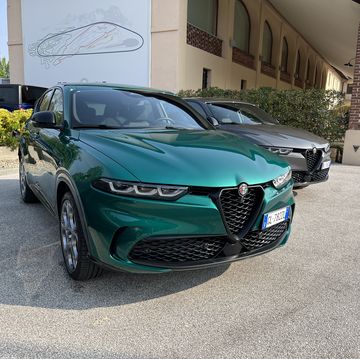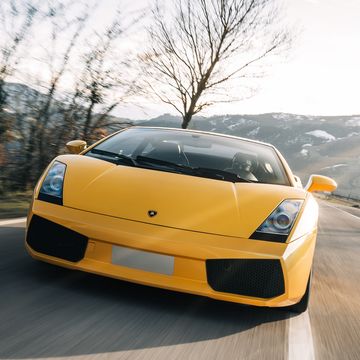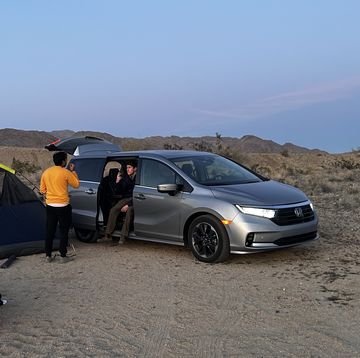The Lamborghini Miura is more mythical figure than car. The stunning proportions and breathtaking performance made it a marvel back in the Sixties, earning it a reputation as the world’s first supercar. It remains a poster child for classic European elegance, even more so than its successor, the legendary Countach. Expectations are so high that actually getting behind the wheel is guaranteed to be a letdown, no matter how it actually drives.
When it was introduced in 1966, the Lamborghini Miura was an instant hit. Not only did the breathtaking Bertone bodywork help it achieve a top speed of 174 mph—the fastest of any production car at the time—but it also helped the car become a movie star, appearing in no fewer than 43 feature films. Everyone remembers the three-minute opening scene in The Italian Job, where a Miura and its driver meet an untimely end at the opening of a tunnel on the Great St. Bernard Pass in Switzerland.
Eddie Van Halen, Jay Kay, Elton John, Miles Davis. Just a few of the famous personalities to own Miuras. Others, like Little Tony, Rod Stewart, and the Shah of Persia, have owned several, only adding to the allure of the Italian two-seater. The car is as much a star as any of the names you see here.
As well-known as the Miura might be, it’s still a car. Lamborghini let me drive a Miura SV for a cherished few minutes during the Lamborghini Revuelto’s reveal in March to find out if there was any truth to the astronomical hype. Straight out of Lamborghini’s Polo Storico heritage fleet, it was a cherry example of the Super Veloce (super fast) model, the most powerful and most desirable of the Miura production lineup—aside from the ultra-rare SVJ. The car pairs a 380-hp version of the transversely mounted V-12 to a five-speed manual with a gated shift boot.
The cool design touches don’t stop once you get inside. A clicky door release handle opens the wide doors, which feature funky winglets on the trailing end that blend into the body lines when shut. Getting into the laid-back bucket seat is an exercise in controlled falling, allowing you to sit low and far back within the cabin. It’s here where the disappointment begins, as the Miura’s seating position is the worst I’ve experienced in any car, ever.
The cabin is seemingly the result of designers prioritizing the car’s exterior shape over cabin space. The pedal box area is so tight that even I, at 5’9,” had my knees smacking against the comically large-diameter steering wheel. The seat was on sliders, but if I moved close enough to get my arms in a comfortable position, there would be no room to operate the pedals. I had to compromise by sitting farther back, my arms fully extended to reach the wheel. It’s not very fun considering the Miura has no power steering.
My first few minutes behind the wheel ask for patience and physical exertion. Getting enough leverage to turn the wheel at parking lot speeds meant having to lean upright, with my back fully away from the seatback. It didn’t help that the car barely held an idle. I had to constantly blip the throttle to keep it from sputtering out. The shifter was surprisingly heavy and resistant to slotting into gear. The manual brakes weren’t great either, despite the relatively light curb weight.
The frustration goes away as soon as the roads open up. On a smooth, fast section of tarmac, the Miura came alive. The steering, once a nuisance, was delicate and gushing with feel. When it had room to breathe, the 12-cylinder turned into an orchestra, delivering unmatched smoothness and an epic, mechanical noise that no modern car can match. The gearbox was far more eager to slip into gear at speed, allowing you to soak in the delightful metallic clanks as you change gear. The suspension woke up too, far more suited to big, open sweepers than tighter, lower-speed stuff.
The world knows the Lamborghini Miura as the world’s first supercar, but it feels much more like a grand touring machine. The best way to deal with the seating position is to lay back into the lounge chair of a seat and have your hands placed on the wheel at 4 o’clock and 8 o’clock, like you would if you were chauffeuring someone in a Rolls-Royce. That’s a bad setup for quick direction changes, but perfect for subtle corrections while cruising leisurely on an open road. Long gearing, a relatively nice ride, and a clear view out of the windshield invite you to sit back, relax, and enjoy the road in front of you (with the occasional blast through second and third, if you can find the space).
As my time with the Miura came to a close, I began to make excuses. If I owned one of these, I could just put a full-size pillow behind my back for support. I could get used to the weird brake system with a day of practice, and swap a smaller steering wheel in for more legroom. And I could get used to the shifter, too. Despite its flaws, I was in love. I wanted to keep driving the Miura. Its charm was undeniable.
Climbing out of the cabin and soaking in the design once more, I realized that it never really mattered if the Miura’s driving characteristics could live up to its mythical status. This is one of few cars that has transcended its original use case and become something more: a true piece of moving art. It’s not just the body that brings it that provenance. It’s how the engine sings at full throttle, and how the steering talks to you in ways you’ve never felt before. To judge the Miura at face value would be doing it a disservice. It’s not the best classic I’ve driven, but it is the most memorable. And that’s more than enough.

Road & Track staff writer with a taste for high-mileage, rusted-out projects and amateur endurance racing.


















